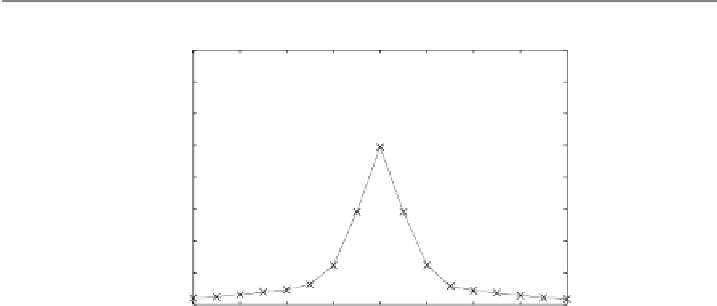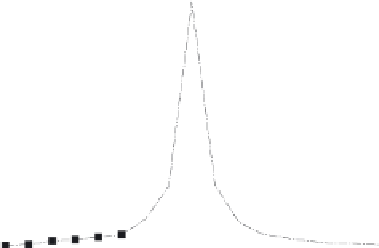Cryptography Reference
In-Depth Information
Table 8.2.
Results of embedding experiments.
image
method
embedded data compressed embedding PSNR
KL
size (bits)
image (bpp)
rate (%)
(dB) divergence
(no embedding)
-
1.129
-
38.55
-
Lena
QIM-JPEG
46318
1.163
15.2
37.60
0.00339
HM-JPEG
45908
1.149
15.2
37.41
0.00138
F5
35174
0.990
13.6
37.26
0.04783
(no embedding)
-
1.517
-
36.92
-
Barbara
QIM-JPEG
54241
1.552
13.3
36.07
0.00285
HM-JPEG
53645
1.543
13.3
35.91
0.00106
F5
43555
1.392
11.9
35.69
0.04117
(no embedding)
-
2.364
-
32.63
-
Mandrill
QIM-JPEG
71621
2.378
11.5
32.13
0.00293
HM-JPEG
71234
2.369
11.5
32.04
0.00124
F5
61481
2.258
10.4
31.89
0.04543
1600
Cover image
QIM-JPEG
HM-JPEG
F5
1400
1200
1000
800
600
400
200
0
-8
-6
-4
-2
0
2
4
6
8
Quantized DCT coefficient
Fig. 8.15.
Histograms of (1,1) frequency component for cover image and stego
images by QIM-JPEG, HM-JPEG and F5.
8.6.5 Conclusions
We have realized two kinds of high performance JPEG steganography: QIM-
JPEG steganography and HM-JPEG steganography. QIM-JPEG is a his-
togram quasi-preserving method using QIM with a dead zone at quantization
step of DCT coe
cients. HM-JPEG is a histogram preserving method based
on histogram matching using two quantizers with a dead zone. In comparison
with F5, the two methods show high performance with regard to embedding
rate, PSNR of stego image, and particularly histogram preservation. The pro-
posed methods are promising candidates for high performance as well as secure
JPEG steganography against histogram-based steganalysis.




































































































